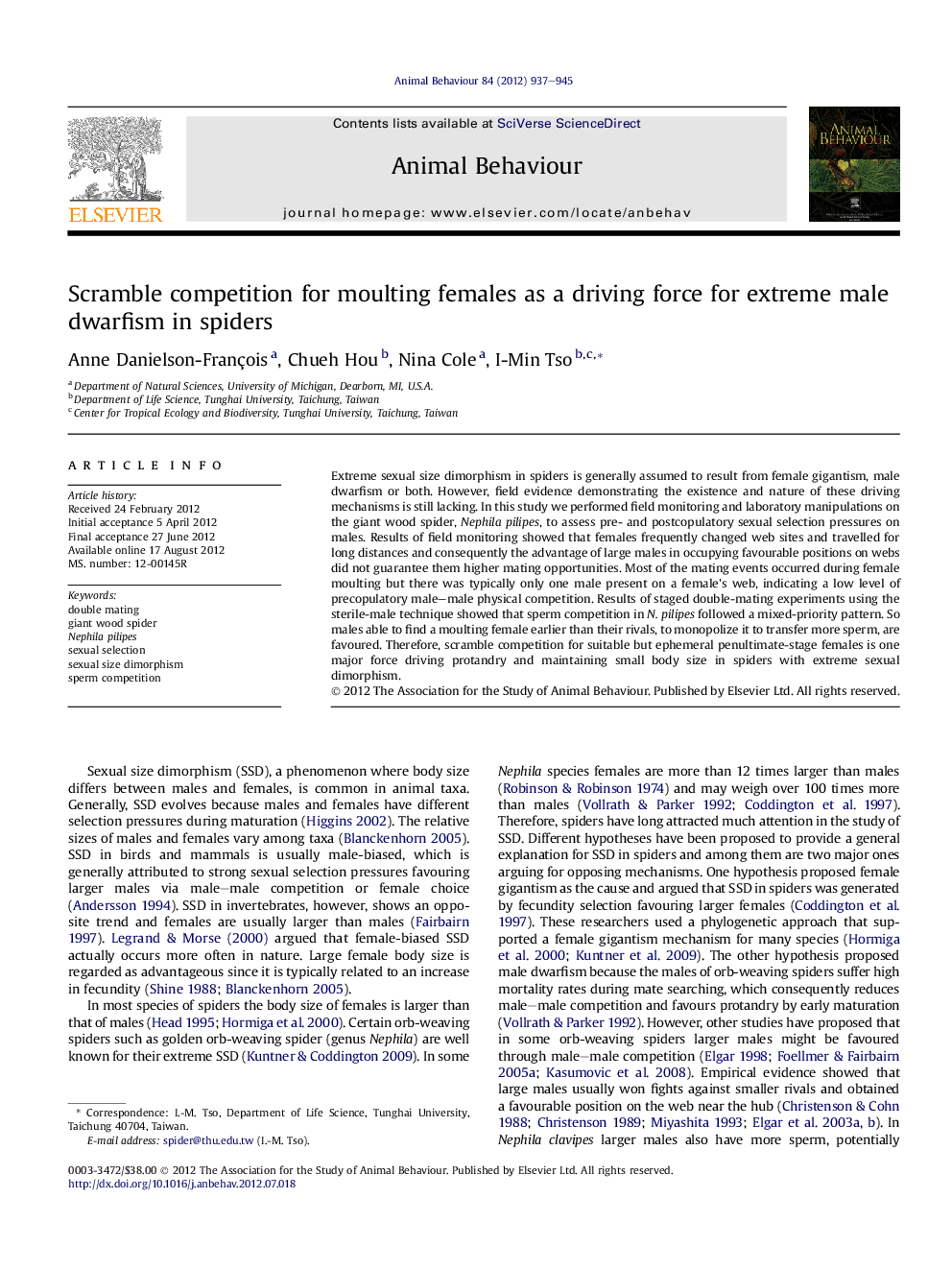| Article ID | Journal | Published Year | Pages | File Type |
|---|---|---|---|---|
| 2416532 | Animal Behaviour | 2012 | 9 Pages |
Extreme sexual size dimorphism in spiders is generally assumed to result from female gigantism, male dwarfism or both. However, field evidence demonstrating the existence and nature of these driving mechanisms is still lacking. In this study we performed field monitoring and laboratory manipulations on the giant wood spider, Nephila pilipes, to assess pre- and postcopulatory sexual selection pressures on males. Results of field monitoring showed that females frequently changed web sites and travelled for long distances and consequently the advantage of large males in occupying favourable positions on webs did not guarantee them higher mating opportunities. Most of the mating events occurred during female moulting but there was typically only one male present on a female's web, indicating a low level of precopulatory male–male physical competition. Results of staged double-mating experiments using the sterile-male technique showed that sperm competition in N. pilipes followed a mixed-priority pattern. So males able to find a moulting female earlier than their rivals, to monopolize it to transfer more sperm, are favoured. Therefore, scramble competition for suitable but ephemeral penultimate-stage females is one major force driving protandry and maintaining small body size in spiders with extreme sexual dimorphism.
► Pre- and postcopulatory pressures on male orb-weaving spider body size are assessed. ► Intense scramble and sperm competition existed in male Nephila pilipes spiders. ► N. pilipes males finding a moulting female earlier to monopolize it are favoured. ► Scramble competition may drive protandry and small body size in some orb-weaving spiders.
